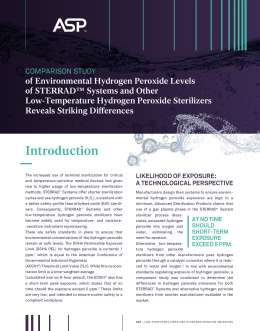Sterilization is crucial in preventing infections caused by contaminated medical devices. With the increasing complexity of these devices, traditional methods like steam autoclaving are no longer suitable.
Consequently, alternative low-temperature sterilization methods have been developed, specifically for heat and moisture-sensitive instruments and devices.
One widely-used method is ethylene oxide (EtO) sterilization. However, it has drawbacks such as long and expensive sterilization cycles, as well as potential toxicity hazards for both patients and staff.
Learn how H2O2 Gas Plasma Sterilization works, here.

